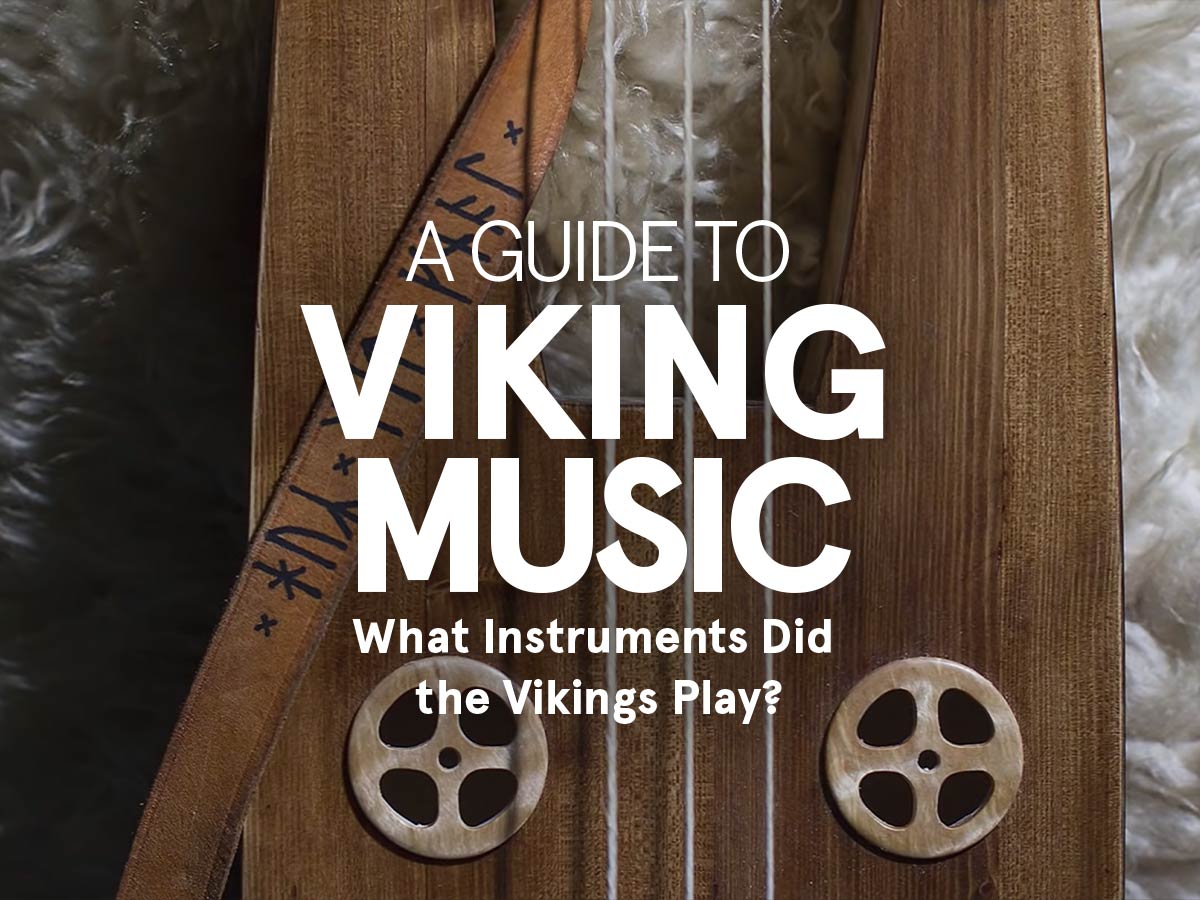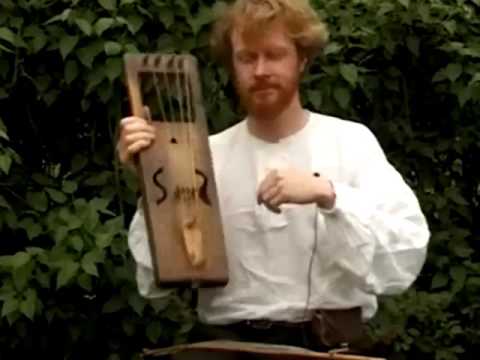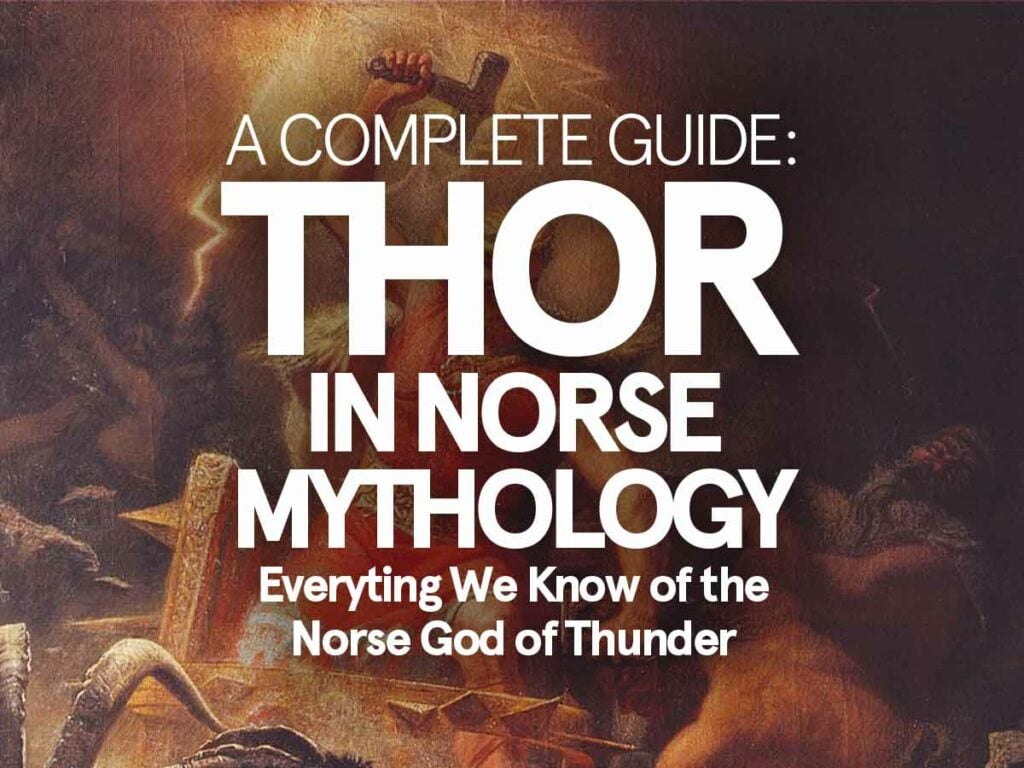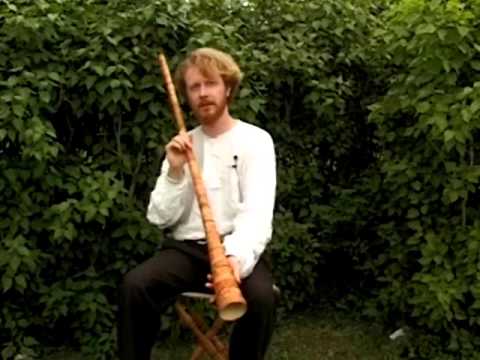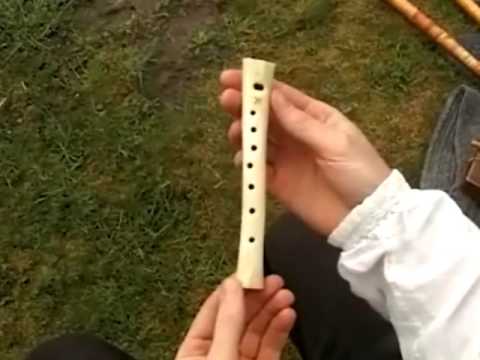As there have been many Viking shows and movies lately depicting all kinds of instruments and music, I wanted to take a closer look at what we actually know of Viking instruments and music archaeologically and historically speaking.
So What Instruments Did the Vikings Actually Play?
Archeologists in Sweden have found many different types of instruments dating back to the Viking age, including various bells, part of a tuning key for a lyre, preparatory work for a split flute, an edge flute, a hunting pipe, and bone whorls in various forms.
If you’re curious about how all these weird instruments might sound, fear not, we’ll get to that a bit further down.
Also, as the Vikings were a seafaring people who traveled and raided most of the world’s known continents, they would have likely picked up on regional musical influences as they roamed the planet.
Most of what we know about Viking music comes from archeological finds of instrument-like objects and from texts that mention music and singing, and if you’d like to find out how they might’ve sounded, read on for some specific examples!
- So What Instruments Did the Vikings Actually Play?
- Did Vikings Play the Harp?
- Did Vikings Play the Lyre?
- Did Vikings Play the Fiddle?
- Did Vikings Play Drums?
- Did Vikings Play Horns or Trumpets?
- Did Vikings Play Flutes?
- Did Vikings Play the Lute?
- Did Vikings Play Bagpipes?
- Did Vikings Play the Harpsichord?
Did Vikings Play the Harp?
We’ve found some harp-like instruments (similar to a “Jew’s harp” or “mouth harp”) in Viking gravesites, that were likely used as instruments by the people they were buried with.
Here’s how they could have sounded (based on a replica of a harp found in Norway traced back to Viking times):
Did Vikings Play the Lyre?
It is believed that lyres were fairly common in Scandinavia during the Viking age, as well as with other Germanic cultures as far back as the Iron Age. They have been found in archaeological sites like Birka, Sweden, and were usually made with materials such as wood, bones and horse hair (the tail to be precise).
We don’t know for sure if they were played with a bow until the 14th century, but we can be fairly sure that they at least were played by the Vikings in some way.
Here’s a how they might’ve sounded based on a recreation by the Swedish History Museum:
And here is a more modern take on a funeral march played with a talharpa, that historians have sourced to the areas around the Baltic sea (mainly Skandinavia and the Baltics) around the time of the Vikings:
Did Vikings Play the Fiddle?
There is no record of Vikings playing the fiddle, but that doesn’t mean they didn’t, as historians have found evidence of fiddles in Scandinavia and Northern Germany dating back as far as 700 CE.
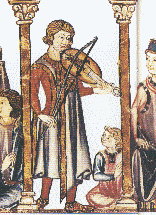
Cantigas de Santa Maria (around 1300)
It’s certainly within the realm of possibilities that Viking settlers in the British Isles could have picked up the practice from their Germanic and Celtic neighbors, and since the Vikings had contact with Muslim cultures, where the fiddle was popular, it’s possible they could have brought the instrument back with them from the east as well.
Did Vikings Play Drums?
There’s no definitive answer to this question since there isn’t much archaeological evidence to support it one way or the other. However, given that drums were used for communication and signaling in other cultures at the time, it’s certainly plausible that the Vikings used them as well.
Additionally, a number of Viking artifacts have been found that suggest they may have had some type of percussion instrument similar to a drum.
Vikings were known for their seafaring expeditions, and as a result, they were probably one of the first cultures to develop drums. Evidence suggests that Viking drums were used in religious ceremonies and for entertainment purposes. Some historians believe that Vikings played drums in battle as well. However, there is no concrete evidence to support this theory.
Did Vikings Play Horns or Trumpets?
Archeologists have found many different types of horn instruments (“lur“) connected to the Old Norse culture, and even from as early as the Iron Age. The lur was a type of trumpet made from a wooden horn or bronze fittings at either end, and there were also horns made by cow horns with holes in them to make different types of sounds.
Here’s how they sounded (recreations by the Swedish Museum of History):
We know that they were used for signalling on naval expeditions and in battle engagements, and likely also had a ceremonial or religious function.
Here’s one made from a cow horn:
Did Vikings Play Flutes?
There is plenty of evidence suggesting Vikings played flutes! We’ve found flutes made of wood, bone, or ivory in Viking gravesites, and they were often decorated with intricate carvings similar to what can be found on runestones and other Viking artifacts.

Here’s how they could have sounded, based on a replica of a flute made by a sheep bone that was found in a Viking grave:
It is believed Viking flutes were used for both entertainment and ceremonial purposes.
Did Vikings Play the Lute?
There is no unequivocal evidence that Vikings played the lute, but there is some suggestive evidence that they might have. For example, a 12th century English manuscript contains an illustration of a Viking playing a triangular-shaped harp, which may or may not have been a lute.
And there are also references to “lutemen” in Scandinavian sagas, which could be interpreted as evidence that Vikings did in fact play the lute.
However, it’s also possible that the term “luteman” simply referred to someone who made or sold lutes, without implying any connection to Vikings per see (as it was a popular instrument in other parts of Europe and the Arabic world, where it originated from).
Did Vikings Play Bagpipes?
Vikings aren’t very likely to have played bagpipes similar to the ones famous in Scotland. However, there are documented uses of the so-called bälgpipa (Swedish bagpipe) in Sweden from the 1300s.
That said, the bagpipes didn’t come into existence until after the Viking Age had ended, and there also aren’t any representations of bagpipes in Norse artwork either, which suggests that they likely weren’t a popular instrument amongst Viking warriors.
Did Vikings Play the Harpsichord?
The Old Norse who lived in Scandinavia during the Viking Age (8th-11th century) definitely did not play the Harpsichord, as the instrument was first developed in the 14th century. That said, it was and is a popular instrument in Scandinavia, the same region the Vikings came from.
Sources:
https://www.svt.se/nyheter/vetenskap/sa-lat-det-pa-vikingatiden-1
https://lup.lub.lu.se/luur/download?func=downloadFile&recordOId=1331332&fileOId=1331333
https://historiska.se/wp-content/uploads/2015/05/Elevuppgifter-Vikingar.pdf
https://www.fotevikensmuseum.se/d/vikingar/hur/musik/instrument
 Is Vikings Worth Watching? (Complete Guide with Comparisons)
Is Vikings Worth Watching? (Complete Guide with Comparisons) Is The Last Kingdom Worth Watching? (Complete Guide)
Is The Last Kingdom Worth Watching? (Complete Guide) Viking Age Hairstyles & Beards: Historical & Modern Takes
Viking Age Hairstyles & Beards: Historical & Modern Takes How Tall & Strong Were Vikings? (Based on DNA & Archeology)
How Tall & Strong Were Vikings? (Based on DNA & Archeology)

